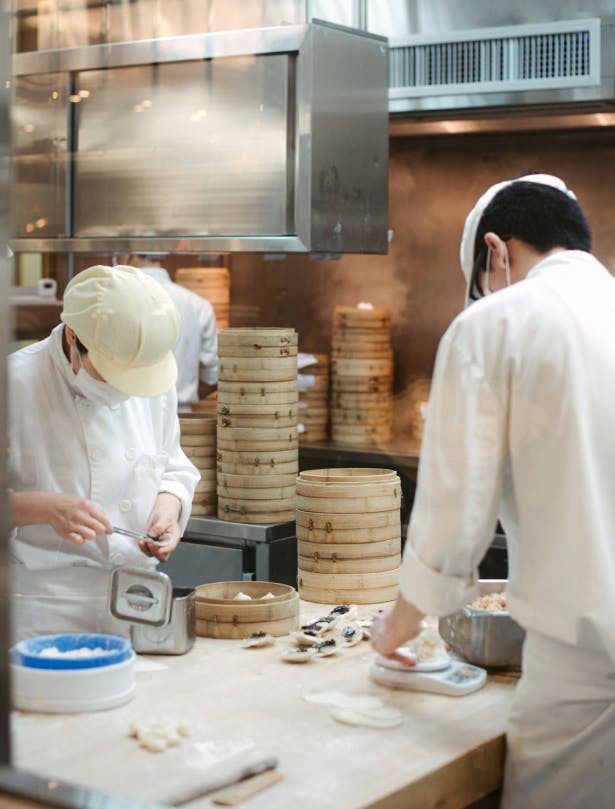In the fast-paced world of culinary innovation, Central Production Kitchens (CPKs) are the life of the food party! These epicentres of deliciousness aren’t just kitchens; they’re the cool cats shaking up the restaurant scene. Get ready to explore more on the beating heart of modern culinary magic – the Central Production Kitchen – where efficiency meets excitement, and every dish is full of flavours!
Understanding Central Production Kitchens
Ever wondered how your favourite restaurants manage to serve up scrumptious dishes with lightning speed and consistent perfection? Let’s dive in and unravel the secrets of central production kitchens!
Definition and Key Features
A Central Production Kitchen (CPK) is a culinary powerhouse, a central hub where food is prepared, prepped, and produced to perfection before making its way to various restaurant outlets. Its primary functions involve boosting efficiency, maintaining quality consistency, and optimising operations for multi-location restaurant brands. Key features of a production kitchen include centralised food production, streamlined processes, and a dynamic setup that caters to high-volume demands.
The Advantages of Central Production Kitchens
Let’s delve into the delectable advantages that make central production kitchens the culinary game-changers they are:
Consistency in Food Quality
Central production kitchens guarantee unwavering quality across locations through meticulous standardisation, extensive training programs, real-time technology monitoring, strategic ingredient sourcing, and continuous improvement feedback loops.
Cost-Effectiveness and Efficiency
By centralising operations, these kitchens achieve bulk purchasing advantages, securing ingredients at favourable prices. The streamlined processes and centralised inventory management lead to reduced labour costs, as skilled chefs handle centralised production, minimising staff requirements in individual locations.
Supporting Brand-Centric Business Models
As central production units, these kitchens expand brand into diverse channels—franchise outlets, delivery, takeout, virtual restaurants, and retail ventures. The scalability and efficiency in central kitchens seamlessly harmonise with the growth strategies of brand-driven models, establishing the foundation for sustained expansion and a unified culinary experience for customers across locations.
Setting Up a Central Production Kitchen
Establishing a central production kitchen demands meticulous planning and strategic considerations. Here are three essential steps to set up a production kitchen, ensuring a smooth and efficient culinary operation.
Location and Space Requirements
Choosing the ideal location and space for your central production kitchen is crucial for its efficiency and success. Opt for a location within a reasonable driving range of your outlets to ensure swift distribution. Consider cost, transportation accessibility, zoning regulations, infrastructure and scalability for future growth, and assess the competitive landscape for added opportunities.
Essential Equipment and Technology
Key equipment and technological needs for production kitchens involve a mix of efficient appliances and cutting-edge software. Prioritise commercial-grade cooking and food preparation equipment tailored to high-volume production. Invest in inventory management and order processing software to streamline internal operations, ensuring effective stock control and minimising errors.
Staffing and Training Considerations
Skilled staff and proper training are crucial for the success of production kitchens. Trained chefs ensure efficient execution and maintain quality standards across locations. This enhances consistency, contributing to a unified brand experience as skilled staff can adapt to high-volume production demands.
Overcoming Challenges
Now, let’s explore how central production kitchens overcome challenges to maintain smooth operations.
Managing Logistics and Supply Chain
Managing the supply chain in production kitchens requires strategic planning, streamlined processes, and strong supplier relationships. Key strategies include implementing inventory systems, optimising delivery schedules, and negotiating bulk purchases. Leveraging technology for real-time tracking and data analysis enhances efficiency and identifies areas for improvement in the overall supply chain.
Ensuring Quality Control
Ensuring quality in a centralised setting involves stringent quality control measures, including regular inspections, standardised recipes and detailed SOPs for food preparation. Advanced kitchen technologies contribute to precision and consistency. Ongoing training for kitchen staff maintains high-quality standards consistently.
Case Studies and Success Stories
Let’s explore some real-world examples of successful central production kitchens that have revolutionised restaurant operations.
Real-World Examples
Various successful ventures have embraced the central production kitchen model to enhance their operational efficiency and maintain quality. McDonald’s, a global fast-food giant, relies on centralised facilities for pre-cooking and preparing menu items, ensuring consistent taste worldwide. Freshly, a meal kit delivery service operates a central kitchen for streamlined meal preparation and efficient distribution. Sweetgreen employs a central kitchen model to handle prep work for its salad chain, maintaining standardised recipes and reducing costs. These real-world examples highlight the adaptability and effectiveness of central production kitchens in meeting diverse business needs.
Lessons Learned
Success stories of central production kitchens highlight key takeaways: enhanced operational efficiency through centralised food preparation, ensuring consistency and streamlined processes across locations. Cost savings result from reduced labour, optimised purchasing, and shared resources in shared kitchen spaces. Standardising recipes and utilising technology for inventory and production planning are crucial. Brands showcase flexibility, adaptability, and versatility in catering to diverse culinary concepts. Maintaining high-quality standards through rigorous quality control measures significantly improves customer satisfaction and brand success.
The Future of Central Production Kitchens
As we journey into the future of dining experiences, central production kitchens stand at the forefront of innovation and efficiency in the culinary landscape. Anticipating future trends, we expect an increased reliance on technology to streamline operations, from smart inventory management to advanced kitchen automation. The concept of central production kitchens is poised to evolve, accommodating emerging food delivery models and cloud kitchens; further expanding into diverse culinary collaborations.
Elevate Your Culinary Venture with Freshlane Cloud Kitchens
Freshlane Cloud Kitchens facilities are now available in four burgeoning Hong Kong districts – Sai Ying Pun, Wan Chai, North Point, and Tsuen Wan. Start growing your business and gain new customers with Freshlane Cloud Kitchens delivery-only central production kitchen today!
